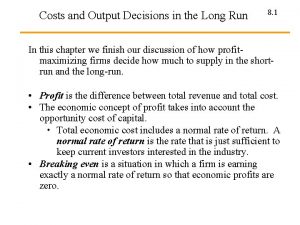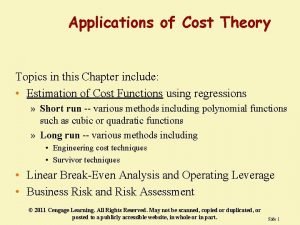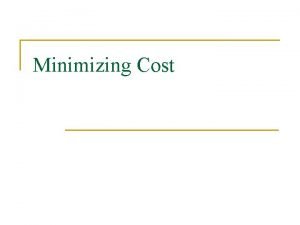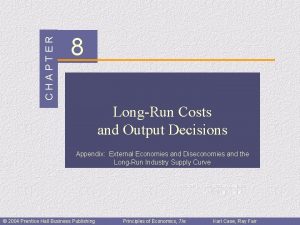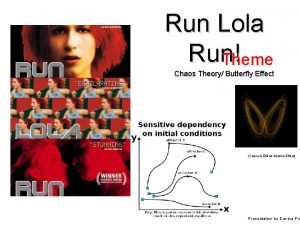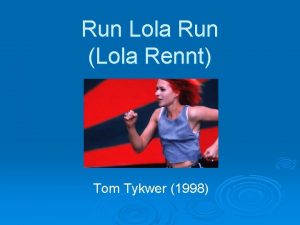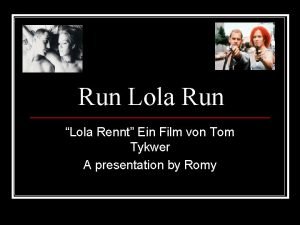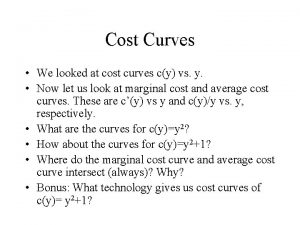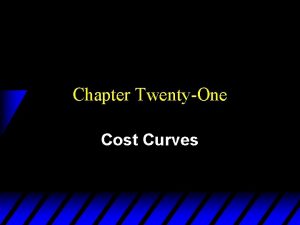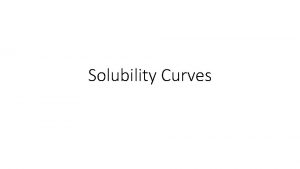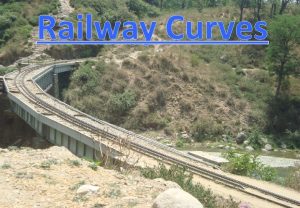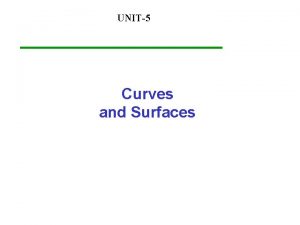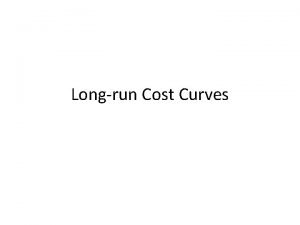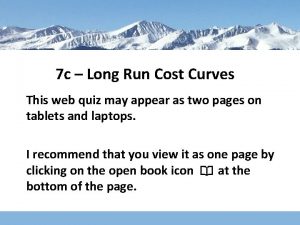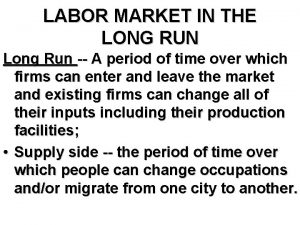Long Run Cost Curves In the long run














- Slides: 14

Long Run Cost Curves

In the long run A small plant that manufactures chairs will have its own short run cost curve If a firm expands and replaces its small plant with a medium size plant, it’ll move from one short run curve to another There is a different short run cost curve for each given quantity of fixed factor At first, each additional plant will only lower the overall long term ATC 2

Short Run Long Run • Firms can only vary employment and material to increase output • Firm can expand or build another factory to increase output 3

Costs in the Long Run (b) Figure 4. 8, page 99 Long-Run Average Costs ATC in short run with small factory ATC in short run with large factory ATC in short run with medium factory AC 4 $ per Magazine AC 1 AC 2 Range A Long-Run AC AC 3 Range B Range C Quantity of Magazines per Week 4

Why might the AC cost curves move downwards between AC 1 and AC 2 (from previous slide) Example: Suppose, for example, that Company X employs 1, 000 workers in a 5, 000 square foot factory to produce 1 million Stuffed Amigos The company then expands to a 10, 000 square foot factory employing 2, 000 workers producing 2 million Stuffed Amigos. Why might going from AC 1 to AC 2 result in a lower production cost per unit?

Note: The law of marginal diminishing return does not apply in the long run because the fixed input is no longer fixed in the long term

Costs in the Long Run (a) Long-run average cost is the minimum short-run average cost at every output The long-run average cost curve is saucer-shaped because of various ranges of returns to scale initial range of increasing returns to scale middle range of constant returns to scale final range of decreasing returns to scale 7

Costs in the Long Run (b) Figure 4. 8, page 99 Long-Run Average Costs ATC in short run with small factory ATC in short run with large factory ATC in short run with medium factory AC 4 $ per Magazine AC 1 AC 2 Range A Long-Run AC AC 3 Range B Range C Quantity of Magazines per Week 8

T 4, Returns to Scale (a) All inputs can be changed by the same proportion in the long run increasing returns to scale means the % change in output > the % change in inputs constant returns to scale means the % change in output = the % change in inputs decreasing returns to scale means the % change in output < the % change in inputs 9

Economies of Scale Economies of scale is also another term that refers to the same thing Increasing returns to scale = Economies of scale Decreasing returns to scale = Diseconomies of scale 10

Returns to Scale (b) Increasing returns to scale are caused by the division of labor working on fewer tasks allow workers to become proficient specialized management Managers can focus on developing and managing own department Specialized Capital Some machinery is only available to larger plants and is designed to produce mass number of units 11

Returns to Scale (b) • Decreasing returns to scale are caused by • management difficulties • Having too many departments will result in coordination and communication issues • limited natural resources • More applicable to fishing and forestry industries where such natural resources are limited, even in the long run

• The long run ATC curve shows the lowest average total cost at which any output level can be produced after the firm has had time to adjust its plant size • Pick the min. point of each of the short run AC curve; connect the dots and you’ll be able to form the long-run ATC curve • In real life, there can be unlimited number of short run ATC curves. Therefore the long run ATC curve is much smoother.

 Long run market supply curve
Long run market supply curve Short run vs long run economics
Short run vs long run economics Perfect competition short run and long run
Perfect competition short run and long run Minimum point of average cost curve
Minimum point of average cost curve Cost output relationship in long run
Cost output relationship in long run Cost minimization in the long run
Cost minimization in the long run Long run cost and output decisions
Long run cost and output decisions Từ ngữ thể hiện lòng nhân hậu
Từ ngữ thể hiện lòng nhân hậu Tall+short h
Tall+short h Once upon a time there lived a fox
Once upon a time there lived a fox Run lola run butterfly effect
Run lola run butterfly effect Run lola run editing techniques
Run lola run editing techniques Multirule plus
Multirule plus Run lola run script
Run lola run script Run lola run wiki
Run lola run wiki



